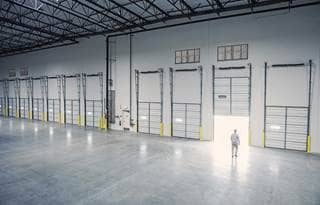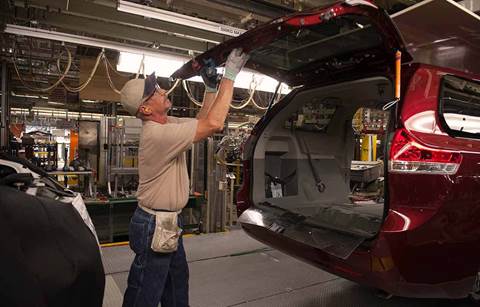It might sound like an understatement to say that the COVID-19 pandemic has severely impacted the automotive industry: disrupting supply chains, slashing demand, and forcing plant shutdowns. But growth and sustainability are about looking beyond any immediate crisis, and this one is no exception. As companies enter a “new-normal” landscape, resume operations, and revisit business continuity and strategic plans, it’s critical not to overlook the impact of converging mobility trends on the future of your business.
Connected, autonomous, shared, and electrified (CASE) technologies were gaining traction before the COVID-19 pandemic, and their adoption will continue to grow — and in many cases and places, even accelerate — as the acute phase of the crisis subsides. To succeed, now more than ever, automotive OEMs and suppliers will need a laser-like focus on their long-term technology strategy, one that requires you to take a broad, global perspective.
It's dangerously easy to be complacent about CASE technologies as you focus on safe, daily operations, resuming production, and addressing the financial impact of COVID-19. Prepandemic, your business might not have felt the impact of CASE technologies for another five to 10 years. Post-pandemic, that time frame may change.
For example, Europe and China aren’t likely to relax their environmental targets, and electrification is charging ahead. In fact, some 300 new electric vehicle models are due out in the next five years , and that number isn’t likely to change as a result of the current health crisis. Concerns about infection are likely to drive new business models and increase use of driver-free autonomous vehicles for ride-sharing companies such as Uber and Lyft. (Autonomous cleaning capabilities and cabin materials with antibacterial properties may offer new opportunities for suppliers who can pivot.) In addition, many individuals who once used mass transit are seeking less dense modes of travel.
As the industry, and your competitors, shift and adapt, would you rather be forced to react or drive change and thrive?
We thought you’d say that. Strategically planning your company’s future and identifying the technologies that will enable you to leapfrog global competition requires a change in outlook. Here are some of the key items you should be thinking about.
Think location, location, location
Adoption of CASE technologies will differ around the world. Some countries and regions will be early adopters, while others will experience slower take-up rates. In other words, technology adoption will not be the same from country to country. Many emerging nations will continue to rely on internal combustion engines (ICEs) fueled with gas and ethanol for years to come, because they lack the infrastructure or per capita wealth CASE technologies demand.
Monitor markets
No longer are U.S.-focused analyses of market growth and technology adoption enough. Sound strategic decisions about how your business is going to adapt to a CASE world require a global view that includes market analyses in particular countries, clusters, and regions.
Your ongoing assessments should include close monitoring of investments in CASE technologies and companies, government regulations, infrastructure growth and development, and the state of the economy in the areas you’re looking at. These factors signal how quickly CASE technologies are likely to be adopted — information absolutely crucial to making decisions and setting your course.
Assess trade dynamics, tariffs, and impacts
What do the strategies you’re identifying and the decisions you’re making mean to your business in light of trade dynamics? Let’s say you’re considering consolidating production of your ICE vehicles or components in Mexico, including production for African markets. What are the current and likely future trade terms? Could smaller assembly plants in each country or region that serve local markets offer a greater benefit?
Dynamism is the operative word when it comes to tariffs and trade. United States-China trade relations, the recent United States-Mexico-Canada Agreement set up for implementation on July 1, 2020, and Brexit, among others, all point to the fact that trade will be shifting and evolving in coming years. It’s important to keep up with the changes and think through the implications.
Think globally, tailor strategies locally
The differing rates of CASE technology adoption and global trade dynamics mean businesses not only must think globally but also tailor their strategies to individual markets. Countries slower to adopt particular CASE technologies, with ICE markets that will continue to grow, will require a far different strategy than early CASE adopters.
Many decisions will center on your footprint. Automotive OEMs and suppliers may need to establish production in emerging markets — India, Vietnam, Thailand, Mexico, Brazil, Russia, Eastern Europe, the Middle East and Africa as examples — to support the growth of domestic ICE vehicle sales. That growth is likely to outpace global averages.
Suppliers producing components for ICE vehicles should understand that if they’re not preparing now to serve these markets, they may very well miss an opportunity when OEMs set up, or expand, shop there. As companies look to derisk and shorten their supply chains as a result of COVID-19, this may become an increasingly important play for suppliers. Remember that it won’t only be about low unit costs but also about gaining the flexibility to respond to local preferences and demand as you consider your and your customers’ global footprints.
In addition, both OEMs and suppliers may need to repurpose existing or establish new plants in the United States and Mexico to produce CASE vehicles and components for early-adopting markets outside the country.
Seek closer relationships and deeper insights
In addition to having a good understanding of the overall industry and OEM strategies, open communication with your current customers is a must — Tier 3s with Tier 2s, Tier 2s with Tier 1s, Tier 1s with OEMs. What are the global CASE strategies of the clients you serve? What trends and issues are they watching? What are their plans, to the extent they can share them? Understanding their thinking and direction can help you anticipate their coming needs.
Seize opportunities through M&A and spinoffs
We’ve seen growing interest in mergers and acquisitions (M&A) among North America-based suppliers trying to diversify their customer base. We’re also expecting considerable consolidation in the coming weeks and months as stronger businesses acquire those that weren’t able to weather the crisis. Consider M&A as a strategy to gain market share, facilitate entry into new markets, and to more efficiently boost CASE production capacity and capabilities in foreign countries.
At the same time, don’t lose sight of spinoff opportunities for your company’s older technologies. Internal combustion is declining in the United States, and that might spell opportunity in other regions where ICE vehicles will continue to dominate.
Mind the gap
As you plan your journey from current to future state, you’ll need to be clear about your current position in the market — the global market. You’ll need to analyze and understand the direction the industry is headed to develop your strategic plan. And you’ll need to allocate ample resources and position yourself now to be ready to deploy change. Rapid — but not overnight — change. As with many business decisions, small changes over a longer period of time are more effective and sustainable (and less stressful) than sudden, radical shifts.
It can be daunting to plan a move into a new territory — we hear the worries all the time. Working with an experienced guide, with expertise in the industry and people on the ground locally, can ensure success. Labor issues, materials, logistics — each aspect of your business needs a strategy around it — after you’ve conducted a thorough business case validation.
Don’t let uncertainty or resistance to change — or distraction by the critical day-to-day concerns related to COVID-19 — get in the way of your longer-term strategic and technology plans. Taking a global perspective now helps your company grow into new products, serve new customers, increase enterprise value, and take the lead in a quickly evolving industry. Ahead of your global competition.





